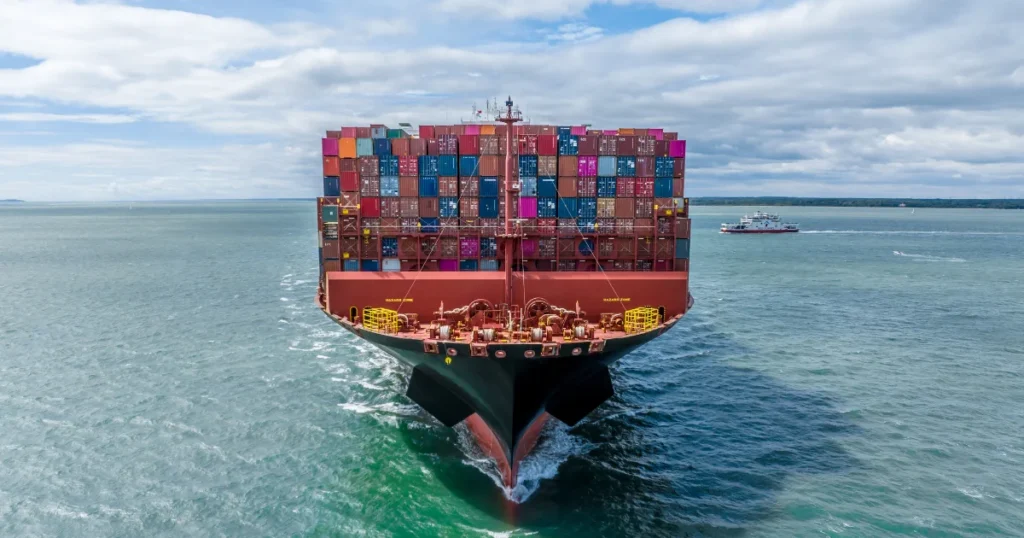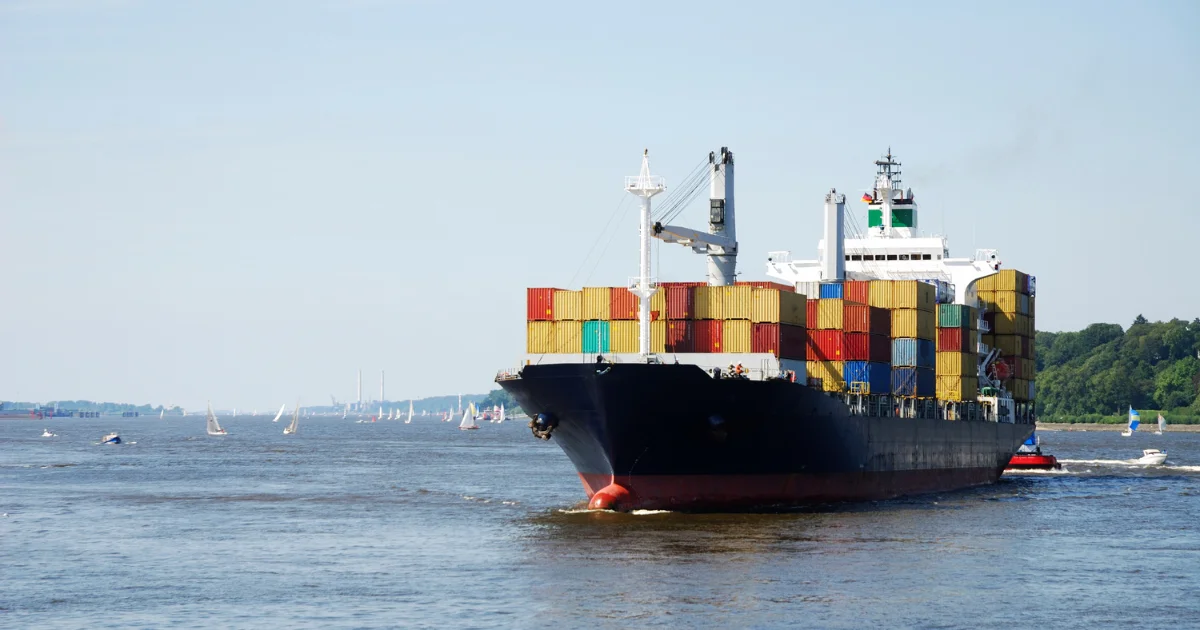When it comes to moving goods across the globe, ocean transport is the unsung hero quietly powering the world economy. In fact, it’s responsible for carrying over 90% of the world’s non-bulk cargo — everything from your favorite sneakers to the machinery that built the factory where those sneakers were made. It’s the global backbone of international trade, connecting continents through an intricate web of sea routes and bustling ports.
Here’s the reality: when your shipment involves massive volumes, oversized cargo, or raw materials, the logistics game changes completely. Suddenly, speed isn’t the only factor—you have to think about cost efficiency, capacity, and scalability. That’s where ocean transport steps into the spotlight.
Unlike air freight, which is lightning-fast but painfully expensive, or road and rail, which are limited by geography, sea freight gives you unmatched capacity at the lowest cost per unit. Container ships today are engineering marvels—some can carry over 24,000 TEUs (twenty-foot equivalent units) in one journey. That’s like moving an entire small city’s worth of goods… in one go.
In this article, we’ll break down exactly why ocean transport is the smartest and most strategic choice for bulk and large shipments. From its cost advantages to its scalability and global reach, you’ll see why this age-old method remains the king of international logistics.
Unmatched Capacity and Scale
When it comes to moving massive volumes of goods, no mode of transport even comes close to the sheer scale of ocean transport. Imagine trying to fit a small city’s worth of cargo onto planes or trucks — it’s just not happening. But on the open seas, that’s business as usual.
🚢 Massive Containerization: The TEU Advantage
The secret behind this scale lies in a little four-letter acronym: TEU, or Twenty-foot Equivalent Unit. This is the standardized unit used to measure shipping containers. Whether you’re shipping electronics, garments, or car parts, they all fit neatly into these stackable metal boxes.
Modern mega-vessels can carry up to 24,000 TEUs in a single voyage. To put that into perspective, that’s like loading more than 12,000 standard 40-foot containers — or roughly 240 fully loaded trains. This extraordinary volume dilutes the cost per unit to levels that no other mode can match, making ocean transport the undisputed champion for bulk and large-scale logistics.
⚓ Specialized Vessels for Bulk Cargo
But not everything moves in containers. The seas are also home to bulk carriers and tankers, each designed for specific types of cargo.
Bulk carriers haul raw materials like coal, iron ore, cement, and grain, which are loaded directly into the vessel’s hold.
Tankers are purpose-built to transport liquids such as crude oil, chemicals, and LNG, ensuring both safety and efficiency.
This kind of specialization simply isn’t possible with air, road, or rail. Only ocean transport offers such a diverse fleet tailored to different cargo types at this scale.
⚖️ Weight? Not a Problem.
One of the biggest constraints for other modes is weight limits. Aircraft face strict payload restrictions due to fuel efficiency and safety. Trucks are bound by road regulations and bridge capacities. Even trains have axle load limits.
Ocean vessels, on the other hand, are in a different league. A single ship can handle hundreds of thousands of tons without dramatically increasing costs. This weight-handling capability makes sea freight the natural choice for heavy machinery, industrial equipment, bulk commodities, and any shipment that would be impractical—or insanely expensive—to move any other way.
👉 Bottom line: When scale is your game, ocean transport is the only player on the field. Its unmatched capacity, container standardization, and ability to carry diverse cargo types make it the go-to strategy for bulk and large shipments—and the backbone of global trade.
Check our Safe & Secured Ocean Freight service for your business
Economic Superiority (Cost Efficiency)

If unmatched capacity is ocean transport’s muscle, then cost efficiency is its secret weapon. When it comes to moving massive volumes of cargo over long distances, no other mode of transportation comes close to the price advantage of sea freight. It’s like buying in bulk at a wholesale store — the more you move, the cheaper it gets per unit.
⛽ Low Cost Per Ton-Mile: The Power of Water
Water isn’t just calm and vast — it’s incredibly efficient. Shipping goods by sea offers the lowest cost per ton-mile of any mode. Why? Because massive vessels can glide over water with far less energy per unit of cargo compared to planes, trucks, or trains.
Think about it: a modern container ship can move one ton of cargo nearly 2,000 kilometers on a single gallon of fuel. Compare that with air freight, which burns through massive amounts of jet fuel just to stay in the sky. Over long intercontinental routes, this fuel efficiency translates directly into jaw-dropping cost savings.
📦 Economies of Scale: One Ship, Thousands of Shipments
The economics of ocean transport get even better when you factor in economies of scale. By consolidating tens of thousands of containers onto a single mega-vessel, shipping lines spread out fixed costs—like crew wages, port fees, insurance, and paperwork—across every single container.
The result? Each unit shipped becomes cheaper. It’s like splitting the bill at a restaurant with 100 friends instead of two—suddenly, your share looks pleasantly small. This scaling effect is one of the key reasons why businesses moving bulk commodities or high volumes lean heavily on ocean freight to keep their landed costs low.
🚢 Full Container Load (FCL) = Maximum Savings
If you’ve got enough cargo to fill a Full Container Load (FCL), the savings get even more impressive. Instead of paying per cubic meter (as with Less than Container Load, or LCL), you’re paying a flat rate for the entire container.
Here’s the kicker: the cost of shipping one FCL by sea can be up to 10–15 times cheaper than sending the same volume by air. Even compared to rail, FCL ocean transport usually wins hands down on long-haul international routes.
For example, if a Bangladeshi garment exporter sources raw materials from China, shipping a full container of fabric by sea might cost just a fraction of what air freight would — even if it takes longer. For businesses with predictable inventory cycles, this cost differential can be the difference between healthy profit margins and razor-thin ones.
👉 Bottom line: When you’re looking to move big volumes without breaking the bank, ocean transport is the clear economic winner. Its unmatched fuel efficiency, economies of scale, and FCL advantages make it the go-to choice for businesses that need to maximize cost-effectiveness while staying competitive in global trade.
Specialized Vessel Varieties for Irregular Freight
Not everything fits neatly inside a standard metal box. Sometimes, your cargo laughs in the face of regular containers—think giant turbine blades, bulky factory equipment, or an entire fleet of SUVs. Luckily, ocean transport isn’t a one-size-fits-all system. It’s more like a Swiss Army knife, offering specialized vessel types and equipment to handle cargo that’s irregular, oversized, or just plain unconventional.
🏗 Break-Bulk Cargo: When Your Shipment Refuses to Shrink
For cargo that’s too large, too heavy, or too oddly shaped to fit inside a container, break-bulk shipping comes to the rescue. Instead of loading the cargo into boxes, individual items are lifted by the ship’s cranes and placed directly onto the deck or into the vessel’s hold.
Imagine shipping a 60-ton industrial generator or a 30-meter-long wind turbine blade — good luck fitting that into a 40-foot container! Break-bulk shipping allows these massive components to travel safely and efficiently, piece by piece. It’s a favorite method for industries like construction, energy, and heavy manufacturing, where “oversized” is the daily norm.
🚗 Ro-Ro Ships: Drive On, Sail Off
Next up: Ro-Ro (Roll-on/Roll-off) ships — the unsung heroes of the automotive world. These vessels are specifically designed to transport wheeled cargo such as cars, trucks, buses, or even massive construction vehicles. Instead of cranes, the vehicles are driven directly onto the ship via ramps, securely parked inside, and then simply driven off at the destination port.
This method is fast, efficient, and minimizes handling risks. If you’ve ever wondered how thousands of cars from Japan or Europe end up in showrooms around the world — this is how. For vehicle manufacturers and exporters, Ro-Ro shipping is often the most cost-effective and damage-minimizing solution.
📏 Flat Rack Containers: The “No Walls, No Problem” Solution
Then there’s the flat rack container, the minimalist cousin of the standard shipping box. It’s essentially a sturdy platform with no sides or roof, perfect for cargo that exceeds standard dimensions in width or height.
Picture a bulldozer, industrial tanks, or steel structures—items that would burst out of a regular container like a T-shirt on a weightlifter. With flat racks, cargo is carefully secured using straps, chains, or wooden bracing, allowing shippers to move oversized freight using standard container-handling equipment and vessels, without the need for fully customized solutions.
👉 Bottom line: Whether it’s rolling vehicles, towering machinery, or awkwardly shaped components, ocean transport provides specialized vessels and equipment to handle cargo that simply can’t be boxed. This flexibility is a major reason why sea freight remains the backbone of global trade—no shipment is too big, too weird, or too heavy to move.
Logistical Trade-Offs: When Speed Doesn’t Matter
Let’s be honest—ocean transport isn’t winning any races. Transit times are measured in weeks, not days. A container from Shanghai to Chattogram, for example, can take anywhere between 15 to 25 days, depending on the service and route. Add port handling, customs clearance, and inland trucking, and you’re looking at a journey that would make express couriers break out in nervous sweat.
But here’s the twist: that “slowness” isn’t a bug—it’s a feature. Smart businesses don’t see long transit times as a dealbreaker. They see it as a strategic opportunity.
📦 Strategic Inventory Management: Planning for the Long Game
Not every shipment needs to arrive yesterday. For products with predictable demand patterns, long lead times, or seasonal cycles, ocean transport fits like a glove.
Take retailers importing winter clothing, for instance. They know exactly when the cold season starts, so they schedule their sea freight months in advance. By the time the chilly winds blow, the containers are already sitting in their warehouses—at a fraction of the shipping cost of air freight.
Similarly, manufacturers often rely on sea freight to stock up on raw materials well before production starts. This ensures their supply chain runs smoothly without the pressure of last-minute airlifts, which can burn through budgets fast.
🧊 Low Volatility Cargo: When Time Is on Your Side
Some cargo simply doesn’t care about speed. Non-perishable, low-volatility goods—like construction materials, household items, machinery parts, or textiles—can easily spend a few weeks at sea without losing value.
For these shipments, sea freight is the ultimate cost-cutting weapon. Businesses can move larger volumes at lower costs, build inventory buffers, and avoid premium express rates, all while keeping their customers happy. In fact, this approach often gives companies a competitive edge: they can hold more stock at lower logistics costs, ensuring product availability when others might run dry.
👉 The takeaway: Yes, sea freight is slow. But when used strategically, speed isn’t always the king. For many types of cargo, cost efficiency, scale, and predictability trump speed every single time. And that’s where ocean transport quietly dominates the global trade game—behind the scenes, moving mountains of goods without breaking the bank.
Conclusion: A Strategic Foundation
When it comes to moving massive volumes of goods across the globe, ocean transport isn’t just an option—it’s the backbone of international trade. No other mode comes close to matching its unmatched capacity, economic superiority, and versatility in handling everything from bulk raw materials to oversized machinery. Whether it’s container ships stacked sky-high or specialized vessels carrying irregular freight, the sea quite literally keeps global commerce afloat.
For businesses focused on maximizing profit margins, especially on commodity goods or large-scale inventory movements, the slower pace of sea freight is a strategic trade-off rather than a setback. In exchange for a few extra weeks in transit, companies unlock massive cost savings, reliable large-scale transport, and a logistics foundation sturdy enough to support long-term growth.
In the end, the ocean rewards those who plan ahead. By aligning inventory strategies with shipping schedules, businesses can turn what seems like a logistical limitation into a powerful competitive advantage—moving more, spending less, and staying ahead in the global game. 🌊📦🚢
👉 Ready to optimize your ocean freight strategy?
Partner with FR Logistics for expert route planning, cost-efficient shipping solutions, and end-to-end logistics support. Our team helps businesses turn complex shipping challenges into smooth, profitable operations.
📞 Contact FR Logistics today and let’s build your competitive advantage—one container at a time.








